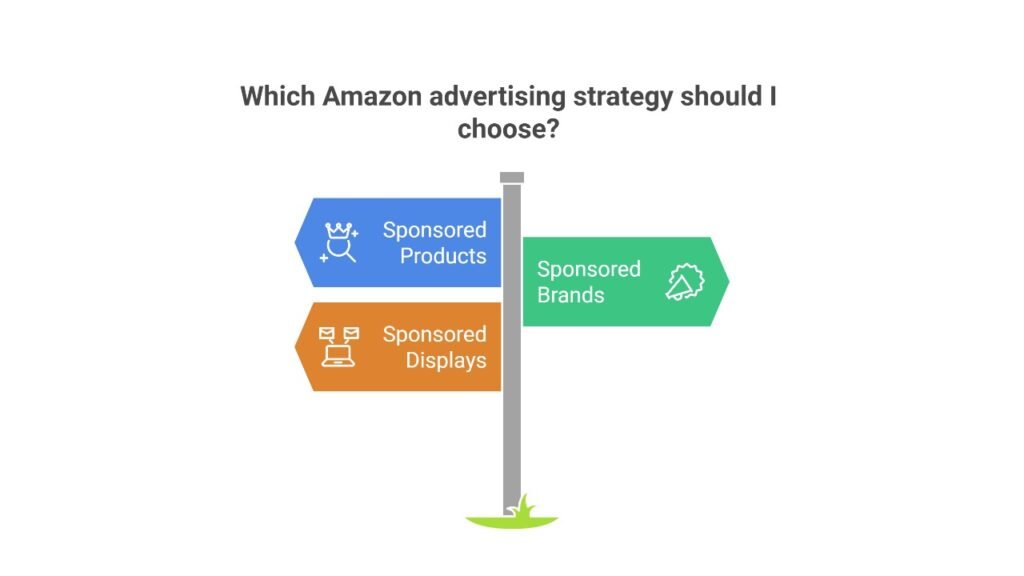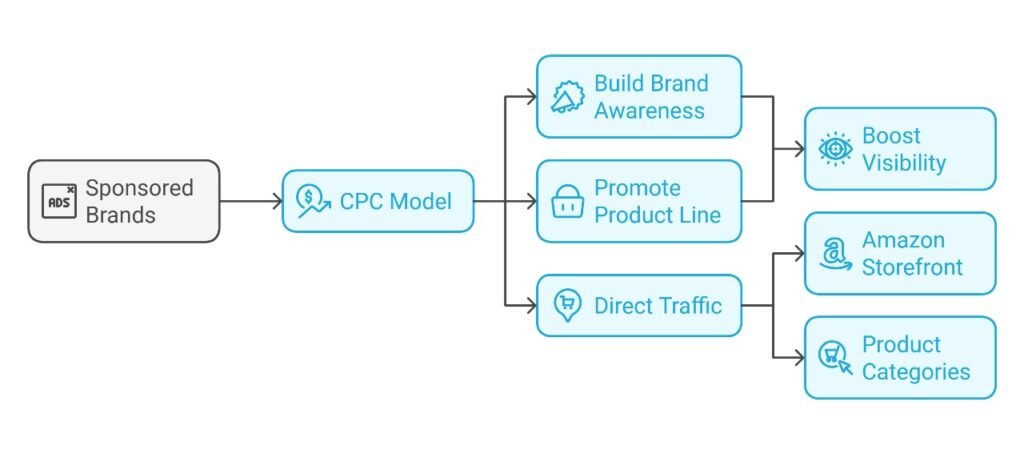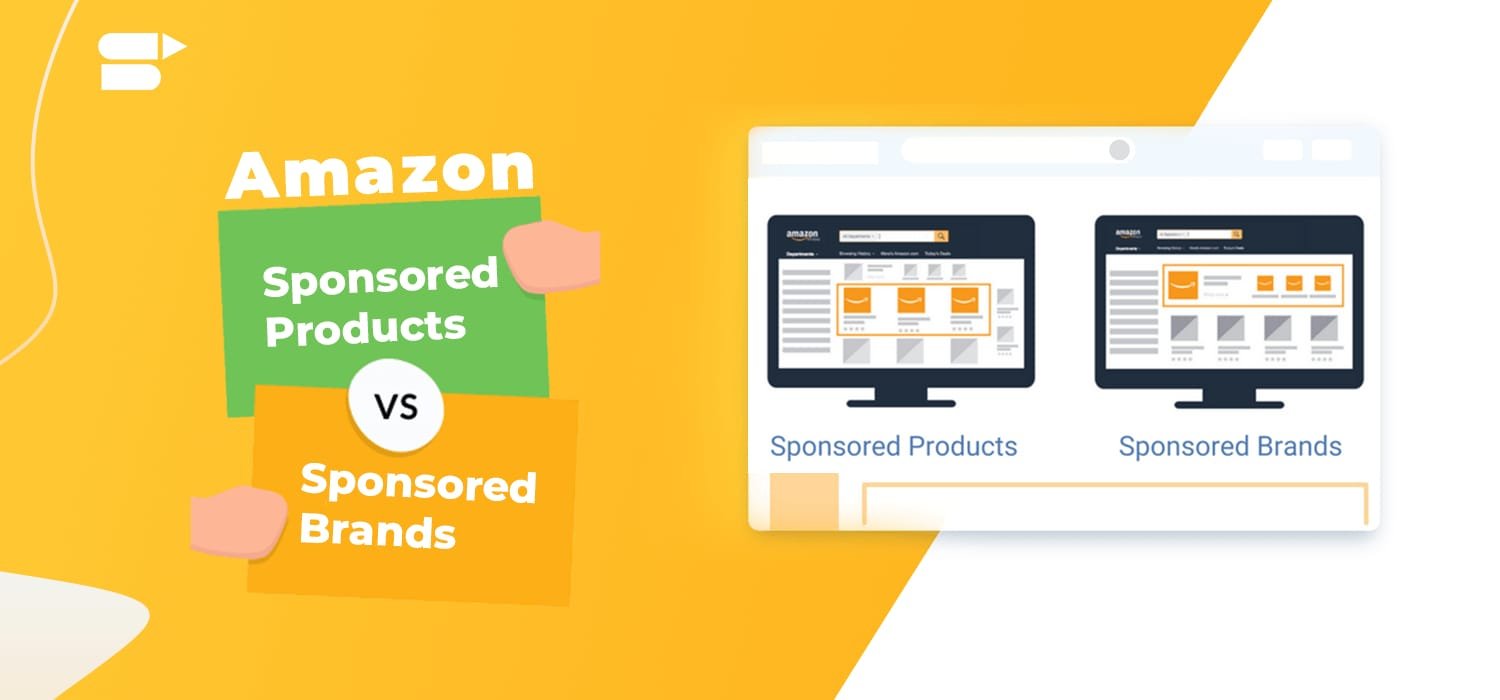Difference between sponsored product /Sponsored brand and sponsored display
If you are selling through Amazon, you probably must have known how important the role of advertising is in building visibility and sales. Different types of advertising options are present on Amazon, and the popular ones include Sponsored Products, Sponsored Brands, and Sponsored Displays. Each type of advertisement has unique features, goals, and advantages, which therefore makes it essential to have knowledge about the differences for a proper advertising strategy.
In this blog, we’ll break down the differences between Sponsored Products, Sponsored Brands, and Sponsored Display ads, and discuss how each can help elevate your presence on Amazon.

Sponsored Product Ads
Sponsored Products ads are the most basic and commonly used form of advertising on Amazon. They are keyword-targeted ads that appear on Amazon search results pages and product detail pages. Sponsored Products ads promote individual products, and they appear either in search results or on product detail pages, typically in the “Sponsored” section.
Key Features of Sponsored Products:
Ad Type: Sponsored Products ads promote specific products from your catalog.
Placement: Sponsored Products ads can appear at the top of search results, within search results, or on product detail pages.
Targeting: You can target these ads based on specific keywords (manual targeting) or use automatic targeting (Amazon’s algorithm decides the best keywords).
Cost Structure: Sponsored Products operate on a cost-per-click (CPC) model, meaning you pay when a shopper clicks on the ad.
Objective: to increase product visibility, attract clicks, and then close sales.
Best for: Direct sales for individual products. Those sellers who want to reach the right customers by targetting search intent.
Sponsored Brand Ads
Sponsored Brands, formerly Headline Search Ads, are another kind of keyword-targeted Amazon ad, but this type is designed to promote your brand as a whole and not just individual products. Sponsored Brands Ads will display at the top of a search result, showing your own customizable banner, such as your logo, your own custom headline, and up to three of your own products.
Key Sponsored Brands Features:
Ad Type: Sponsored Brands ads are much more brand-focused and you can feature up to three of your products in the ad.
Placement: Sponsored Brands appear prominently at the top of search results on Amazon
Targeting: Just as with Sponsored Products, Sponsored Brands also allows you to target with specific keywords which will attract shoppers searching for that exact thing.
Cost Structure: Sponsored Brands follow the cost-per-click CPC model.
The aim is to build brand awareness, to promote a line of products, and to direct traffic to your brand storefront or to a specific product detail page.
Recommended for Those sellers looking to boost the visibility and awareness of the brand.
Promotion of products collection or to exhibit your brand value.
The seller wants to direct the traffic to their Amazon Storefront or specific product categories.

Sponsored Display Ads
Sponsored Display ads are more versatile and can target customers both on and off Amazon. Unlike Sponsored Products and Sponsored Brands, which are typically used to target keywords, Sponsored Display ads are mainly based on audiences and product interests. These ads are made to drive visibility to your products by displaying ads on Amazon’s product detail pages, on other sites within Amazon’s advertising network, and even outside of Amazon on other websites.
Key Features of Sponsored Display:
Ad Type: Sponsored Display ads can be for individual products, but they are designed more for audience and interest-based targeting, not just keyword targeting.
Placement: Sponsored Display ads can appear both on Amazon and off Amazon, including on third-party websites and apps within Amazon’s advertising network.
Targeting: These ads use audience-based targeting, including targeting by interests, retargeting past visitors, and reaching shoppers who have viewed similar products.
Cost Structure: Sponsored Display ads employ a cost-per-click model; however, specific placements like retargeting include both CPC and CPM.
Objective: Sponsored Display ads aim to build product awareness, retarget users who have previously engaged, increase sales on and off of Amazon.
Differences Between Sponsored Products, Sponsored Brands, and Sponsored Display
Best for:
Retargeting customers who have viewed your product or other products like yours or already are aware of your brand.
Reach new audience both on and off of Amazon through interest-based targeting.
Seller wants to promote their products with the aim of increasing product recognition beyond Amazon.
Key Differences Between Sponsored Products, Sponsored Brands, and Sponsored Display
Feature | Sponsored Products | Sponsored Brands | Sponsored Display |
Ad Objective | Promote individual products | Build brand awareness, promote multiple products | Retargeting, audience-based targeting, or product promotion across channels |
Ad Placement | Search results, product detail pages | Top of search results | On Amazon product detail pages, off Amazon (third-party sites, apps) |
Targeting | Keyword targeting (manual or automatic) | Keyword targeting, targeting by product | Audience targeting, interest-based targeting, retargeting |
Cost Model | Cost-per-click (CPC) | Cost-per-click (CPC) | Cost-per-click (CPC) or cost-per-thousand-impressions (CPM) |
Best For | Driving direct sales for individual products | Increasing brand visibility, showcasing a range of products | Expanding reach beyond Amazon, retargeting past customers, increasing awareness |
Number of Products in Ad | One product at a time | Up to three products (banner-style) | One product per ad |
When to Use Each Type of Ad
Use Sponsored Products when you want to drive direct sales for a specific product. It’s best for sellers who want to optimize for product-level performance and increase the visibility of their items in search results and on product detail pages.
Use Sponsored Brands when you would like to increase brand awareness and promote multiple products under one ad. Sponsored Brands are excellent for building awareness, promoting product lines, and driving traffic to an Amazon storefront or a group of products.
Use Sponsored Display when you need to reach more people outside of Amazon or retarget people who already shopped and showed an interest in your product. This is good for behavioral and interest targeting, but also for re-engaging potential customers throughout the Amazon ecosystem and beyond.
Conclusion
Amazon offers several advertising solutions that cater to specific goals. Sponsored Products, Sponsored Brands, and Sponsored Display ads all have different purposes and can be used together to create a well-rounded advertising strategy on the platform.
Sponsored Products are perfect for increasing visibility of individual products and driving sales.
Sponsored Brands are best for overall brand awareness and promoting a line of products.
Sponsored Display is a good opportunity for retargeting and new audiences on and off Amazon.
With knowledge of the differences and benefits of each ad type, sellers can better make informed decisions on which advertising strategies to employ in order to maximize their reach and drive more sales on Amazon.
